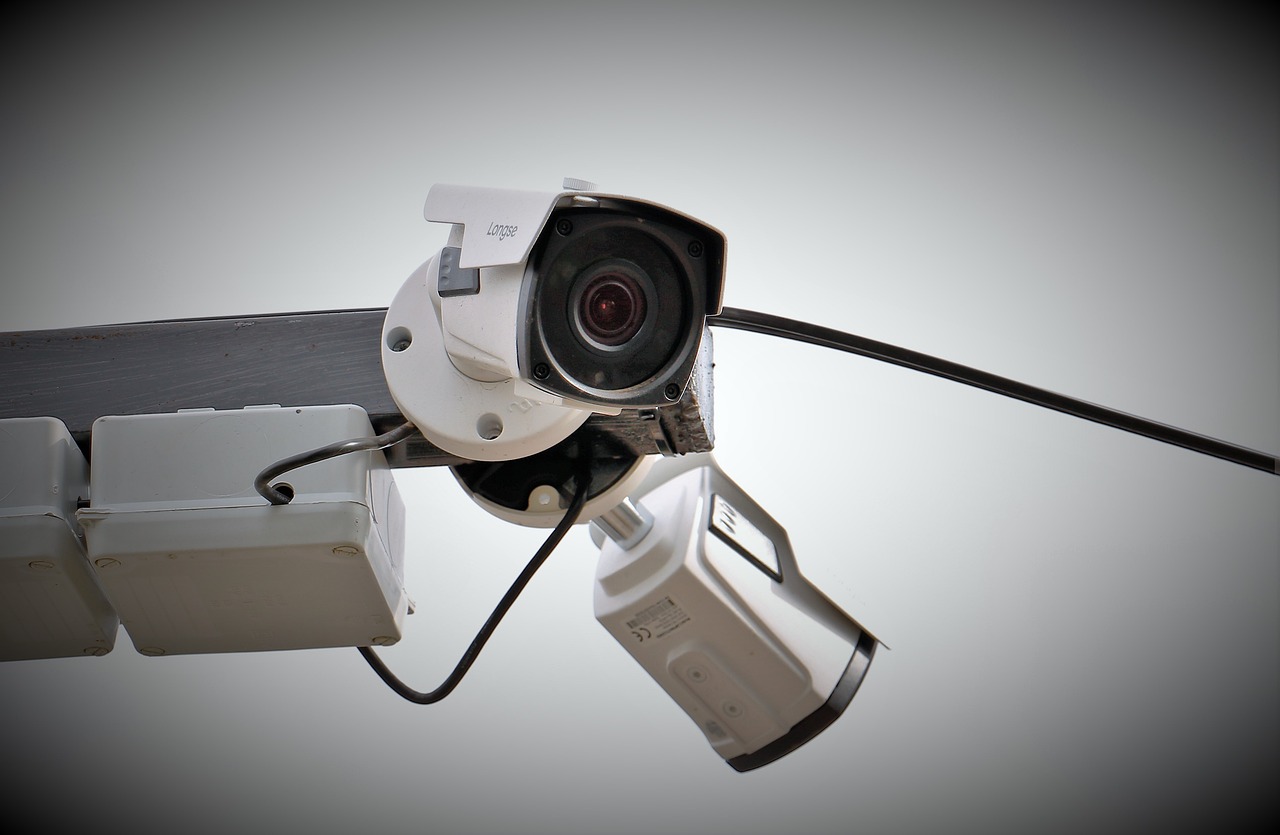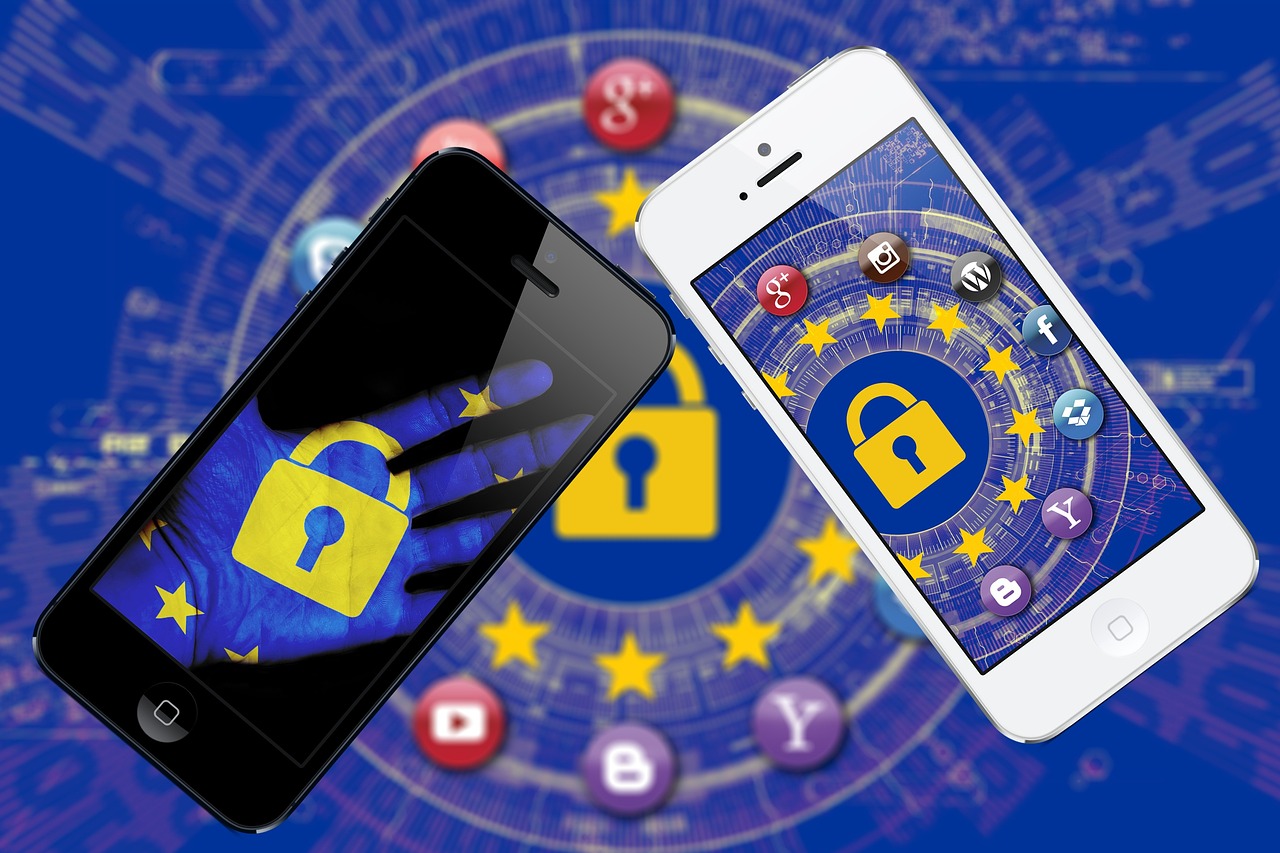How to Safeguard Your Data in the Cloud
In today's digital age, where almost everything is stored online, protecting your data in the cloud has never been more crucial. With the rise of cloud computing, we enjoy the convenience of accessing our files from anywhere, at any time. However, this convenience comes with its own set of challenges, especially concerning security. Imagine your data floating in the cloud like a balloon—while it’s light and easy to carry, it’s also vulnerable to being popped by a sharp object. So, how can we ensure that our precious information remains safe and sound? In this article, we will explore essential strategies for securing your data in cloud environments, highlighting best practices, tools, and technologies to help you maintain privacy and protect against potential threats.
Identifying the various risks associated with cloud computing is crucial for effective data protection. When you store data in the cloud, you're essentially entrusting it to a third party. This can lead to several vulnerabilities, including data breaches, account hijacking, and insecure APIs. Think of it as leaving your front door unlocked; you’re inviting trouble without even realizing it. Common threats that can compromise your data stored in the cloud include:
- Data Breaches: Unauthorized access to sensitive information.
- Insider Threats: Employees or contractors misusing their access.
- Insecure APIs: Weak interfaces that can be exploited by attackers.
- Data Loss: Accidental deletion or corruption of files.
Being aware of these risks allows you to take proactive steps to mitigate them, ensuring that your data is not just floating around aimlessly but is securely anchored in place.
Access controls are vital for safeguarding sensitive information. Just like a bouncer at a club checks IDs before letting people in, you need to manage who gets access to your cloud data. This involves setting user permissions and implementing robust authentication methods. Ensuring that only authorized personnel can access your data is non-negotiable. A good practice is to apply the principle of least privilege, which means giving users the minimum level of access necessary to perform their jobs. This way, even if someone’s account gets compromised, the potential damage is limited.
One of the most effective ways to enhance your security is through Multi-Factor Authentication (MFA). This adds an extra layer of security beyond just a password. Think of it as needing both a key and a secret code to unlock a treasure chest. By requiring multiple forms of verification, you significantly reduce the risk of unauthorized access. Even if an attacker gets hold of your password, they would still need that second factor to gain entry.
Different MFA methods vary in effectiveness and convenience. Here are some popular options you might consider:
- SMS Codes: A text message sent to your phone with a verification code.
- Authenticator Apps: Apps like Google Authenticator or Authy that generate time-sensitive codes.
- Biometric Verification: Using fingerprints or facial recognition for access.
Choosing the right method depends on your organization’s needs and the sensitivity of the data involved. Each method has its pros and cons, so weigh them carefully.
Properly implementing MFA is key to its effectiveness. Here are some essential practices to ensure MFA is used correctly and efficiently across your organization:
- Educate users about the importance of MFA.
- Regularly review and update MFA settings.
- Encourage the use of authenticator apps over SMS for better security.
By following these best practices, you can ensure that your MFA implementation is not just a checkbox activity but a robust security measure.
Educating users about security practices is crucial. Even the best security measures can fail if users are not aware of potential threats. Training employees on recognizing phishing attacks, understanding the importance of strong passwords, and following security protocols can significantly mitigate risks. Think of your employees as the first line of defense; if they’re well-equipped with knowledge, they can help protect your organization from various threats.
Data encryption is a fundamental aspect of cloud security. It involves converting your data into a coded format that can only be read by those who have the decryption key. This means that even if an attacker gains access to your data, it would be meaningless without the key. Encryption protects your data both in transit (when it’s being sent) and at rest (when it’s stored). It’s like putting your information in a safe; even if someone breaks into your house, they can’t access the contents of the safe without the combination.
Selecting appropriate encryption tools is essential for effective data protection. There are various solutions available, each suited for different cloud environments. Popular encryption solutions include:
- AES (Advanced Encryption Standard): A widely used encryption standard.
- RSA: A public-key encryption method ideal for secure data transmission.
- SSL/TLS: Protocols that ensure secure communication over networks.
Choosing the right tools depends on your specific needs and the types of data you're handling.
Understanding compliance requirements is vital. Regulations like GDPR, HIPAA, and CCPA dictate how organizations must handle sensitive data. Failing to comply can lead to hefty fines and damage to your reputation. It’s essential to stay informed about these regulations and ensure that your cloud practices align with them. Regular audits and assessments can help you maintain compliance while safeguarding sensitive information.
Q: What is cloud security?
A: Cloud security refers to the set of policies, controls, and technologies that work together to protect data, applications, and infrastructure involved in cloud computing.
Q: How can I ensure my data is safe in the cloud?
A: Implement strong access controls, use Multi-Factor Authentication, encrypt your data, and ensure compliance with relevant regulations.
Q: What is Multi-Factor Authentication?
A: Multi-Factor Authentication is a security measure that requires more than one form of verification to access an account, enhancing overall security.
Q: Why is user training important?
A: User training is crucial because even the best security measures can fail if employees are unaware of potential threats and how to respond to them.

Understanding Cloud Security Risks
When we think about the cloud, it often feels like a magical place where our data floats safely among the stars. However, just like in any fairy tale, there are lurking dangers that can threaten our precious information. Understanding cloud security risks is the first step in fortifying your defenses. From data breaches to insider threats, the vulnerabilities in cloud computing can be numerous and varied.
One of the most significant risks is the potential for data breaches. These incidents can occur due to weak security measures or vulnerabilities in the cloud provider's infrastructure. Imagine leaving your front door unlocked; it only takes one opportunistic thief to walk in and take what they want. Similarly, if your cloud data isn't adequately protected, unauthorized users can gain access to sensitive information.
Another common threat is misconfigured cloud settings. Many organizations rush to adopt cloud solutions without fully understanding the configurations they are putting in place. A simple oversight, like leaving storage buckets open to the public, can expose sensitive data to the entire internet. It's akin to setting up a security system but forgetting to activate it. Regular audits and careful configuration management are essential to mitigate this risk.
Moreover, insider threats pose a significant challenge. Not all threats come from external sources; sometimes, the danger lies within. Employees with access to sensitive data might misuse their privileges, either maliciously or accidentally. This is where robust access controls and user training come into play, ensuring that only authorized personnel can access critical information.
Additionally, the risk of data loss due to outages or service disruptions cannot be overlooked. Cloud service providers may experience downtimes, and if your data isn't backed up correctly, you could lose everything in the blink of an eye. It's crucial to have a solid backup and disaster recovery plan in place, much like having a safety net when performing a tightrope walk.
Finally, compliance violations can lead to severe penalties. Various regulations, such as GDPR and HIPAA, govern how data should be handled. Failing to comply can result in hefty fines and damage to your organization's reputation. It’s essential to stay informed about these regulations and ensure your cloud practices align with them.
In summary, understanding the risks associated with cloud computing is vital for protecting your data. Regularly assessing your security posture, implementing robust access controls, and staying informed about compliance requirements can help you navigate the cloud safely. Remember, while the cloud offers incredible benefits, it also requires diligence and proactive measures to secure your data effectively.

Implementing Strong Access Controls
When it comes to securing your data in the cloud, one of the most crucial steps is implementing strong access controls. Think of access controls as the locks on your front door. Just as you wouldn’t leave your home wide open for anyone to stroll in, you shouldn’t allow unrestricted access to your sensitive information. By managing who can access your data and what they can do with it, you significantly reduce the risk of unauthorized access and potential breaches.
Access controls encompass a variety of strategies, including managing user permissions and utilizing robust authentication methods. It’s essential to ensure that only authorized personnel can view or manipulate sensitive information. This can be achieved through role-based access control (RBAC), where users are granted permissions based on their roles within the organization. For example, an employee in the finance department may need access to financial records, while a marketing team member may not. This principle of least privilege ensures that users have the minimum level of access necessary to perform their job functions.
Furthermore, it’s vital to regularly review and update access permissions. Over time, employees may change roles, leave the company, or their job responsibilities may evolve. If access controls are not updated accordingly, you risk leaving sensitive data exposed. A good practice is to establish a routine audit schedule to evaluate user access levels and adjust them as needed. This proactive approach helps maintain a secure environment and mitigates risks associated with stale permissions.
In addition to managing permissions, implementing multi-factor authentication (MFA) is a game-changer for enhancing access control. MFA adds an extra layer of security by requiring users to provide multiple forms of verification before granting access. This could include something they know (like a password), something they have (like a smartphone for a one-time code), or something they are (like a fingerprint). By requiring more than one form of authentication, you create a formidable barrier against unauthorized access.
To effectively implement access controls, consider the following best practices:
- Regularly Update Access Permissions: Ensure that user permissions are reviewed periodically and updated to reflect any changes in roles or employment status.
- Use Strong Password Policies: Encourage the use of complex passwords and require regular updates to minimize the risk of password-related breaches.
- Implement MFA: As discussed, MFA is critical. Choose methods that are user-friendly yet secure to encourage adoption.
- Educate Employees: Regular training on security protocols and the importance of access controls can foster a culture of security awareness.
By focusing on these best practices, organizations can create a robust framework for data protection in the cloud. Remember, strong access controls are not just about technology; they also involve a cultural shift within the organization towards prioritizing security.
Q: What are access controls?
Access controls are security measures that restrict access to data and resources based on predefined permissions.
Q: Why is multi-factor authentication important?
MFA adds an additional layer of security, making it much harder for unauthorized users to gain access, even if they have the password.
Q: How often should I review access permissions?
It’s recommended to review access permissions at least quarterly or whenever there is a change in personnel or roles within the organization.

Multi-Factor Authentication
In today's digital landscape, where cyber threats loom large, Multi-Factor Authentication (MFA) stands out as a beacon of hope for enhancing security. Imagine locking your front door but also installing a security system that requires a code and a fingerprint scan. That's essentially what MFA does for your online accounts. By requiring more than just a password, you significantly bolster your defenses against unauthorized access.
So, how does MFA work? It's pretty straightforward. When you attempt to log into your account, after entering your password, you'll be prompted for an additional piece of information. This could be something you have (like a smartphone), something you know (like a PIN), or even something inherent to you (like a fingerprint). This multi-layered approach makes it drastically harder for hackers to gain access, even if they manage to steal your password.
There are several methods of MFA, and choosing the right one is crucial. For instance, SMS codes are popular, but they can be intercepted. On the other hand, authenticator apps and biometric verification methods—like facial recognition—offer a more robust solution. It's like choosing between a basic lock and a high-tech smart lock for your home. The latter not only provides security but also peace of mind.
Implementing MFA isn't just about choosing a method; it's about integrating it into your organization's culture. This means ensuring that all employees understand why it's essential and how to use it effectively. When everyone is on board, the security of your data improves exponentially. In fact, studies have shown that organizations that employ MFA see a significant drop in security breaches.
To summarize, MFA is not just an optional extra; it's a critical component of any comprehensive security strategy. By adding this layer of protection, you are not only safeguarding sensitive information but also fostering a culture of security awareness within your organization. Remember, in the world of cybersecurity, an ounce of prevention is worth a pound of cure.
| MFA Method | Description | Effectiveness |
|---|---|---|
| SMS Codes | One-time codes sent via text message. | Moderate |
| Authenticator Apps | Time-based one-time passwords generated by an app. | High |
| Biometric Verification | Fingerprint or facial recognition. | Very High |

Choosing the Right MFA Methods
When it comes to multi-factor authentication (MFA), the choices can feel overwhelming. But fear not! Choosing the right MFA methods can be as straightforward as picking your favorite ice cream flavor—once you know what’s available, you can make a delicious decision. The key is to understand the various options and how they align with your organization’s specific needs. Let’s break it down.
First up, we have SMS codes. This method sends a one-time code to the user’s mobile phone. While it’s convenient and easy to use, it’s not foolproof. SMS messages can be intercepted, making this method less secure than others. However, it’s a great starting point for organizations new to MFA.
Next, consider using authenticator apps like Google Authenticator or Authy. These apps generate time-based one-time passwords (TOTPs) that refresh every 30 seconds. They offer a higher level of security than SMS codes because they don’t rely on mobile networks. Users simply need to have the app installed on their smartphones, which makes it both secure and user-friendly.
If you want to take security up a notch, biometric verification is the way to go. This method uses unique biological traits, such as fingerprints or facial recognition, to verify a user’s identity. It’s incredibly secure because, let’s face it, you can’t easily share your fingerprint or face with someone else! However, this method requires compatible hardware, which could be a consideration for some organizations.
Another option is hardware tokens, which are physical devices that generate one-time codes. These tokens can be a bit more cumbersome since they require users to carry an additional device, but they offer robust security. Many organizations find that the added security is worth the extra effort, especially for accessing sensitive data.
Ultimately, the right MFA method for your organization will depend on various factors, including the level of security you require, the resources available for implementation, and the comfort level of your users with technology. To help you make an informed decision, here’s a quick comparison of the different MFA methods:
| MFA Method | Security Level | Usability | Cost |
|---|---|---|---|
| SMS Codes | Medium | High | Low |
| Authenticator Apps | High | Medium | Low |
| Biometric Verification | Very High | Medium | Medium to High |
| Hardware Tokens | High | Low | Medium to High |
In conclusion, when choosing the right MFA method, consider your organization’s specific needs, user preferences, and the level of security required. Don’t hesitate to experiment with different methods to find the perfect fit. Remember, the goal is to create a security environment that not only protects your data but also empowers your users to feel confident in their access to information.
Q: What is multi-factor authentication (MFA)?
A: MFA is a security measure that requires users to provide two or more verification factors to gain access to a resource, such as an application or online account.
Q: Why is MFA important?
A: MFA adds an extra layer of security, making it significantly harder for unauthorized users to gain access to sensitive information, even if they have stolen a password.
Q: Can I use more than one MFA method?
A: Absolutely! Many organizations choose to implement multiple MFA methods for added security. For example, you could use both an authenticator app and biometric verification.
Q: Is MFA difficult to implement?
A: The complexity of implementing MFA depends on your organization’s existing systems and the methods you choose. However, many modern solutions are designed to be user-friendly and straightforward to set up.

Best Practices for MFA Implementation
Implementing Multi-Factor Authentication (MFA) is a powerful way to bolster your cloud security, but it’s not just about flipping a switch and hoping for the best. To truly harness the power of MFA, you need to follow some best practices that ensure it works effectively and efficiently across your organization. First off, it's essential to tailor your MFA approach according to the specific needs and risks associated with your business. Not all organizations are the same, and what works for one might not work for another.
One of the most critical aspects of MFA implementation is user education. Employees need to understand why MFA is necessary, how it works, and what their responsibilities are. Conducting regular training sessions can help in this regard. For instance, you might want to organize workshops or create informative materials that explain the importance of MFA and demonstrate how to use it effectively. This way, users will not only comply but also feel empowered to protect their data.
Furthermore, consider the user experience when implementing MFA. If the process is cumbersome, users may be tempted to bypass it, which defeats the purpose of having MFA in the first place. Therefore, it's vital to strike a balance between security and convenience. For example, you could provide options for users to remember their devices after a successful authentication, reducing the number of times they need to enter their credentials.
Another best practice is to regularly review and update your MFA settings. The cybersecurity landscape is ever-evolving, and threats can change rapidly. By periodically assessing your MFA methods and configurations, you can ensure that they remain effective against new threats. This might include switching to more robust authentication methods or adding additional layers of verification as needed.
Lastly, don’t forget to monitor and analyze the authentication logs. Keeping an eye on who is accessing your data and from where can provide insights into potential security breaches. If you notice unusual activity, such as failed login attempts or logins from unfamiliar locations, it’s crucial to act quickly. Set up alerts for suspicious behavior to ensure you can respond promptly to potential threats.
In summary, implementing MFA is more than just a checkbox on your security list. By focusing on user education, balancing security with user experience, regularly reviewing settings, and monitoring access logs, you can create a robust MFA strategy that significantly enhances your cloud security posture.
- What is Multi-Factor Authentication (MFA)?
MFA is a security mechanism that requires users to provide two or more verification factors to gain access to a resource, making it harder for unauthorized users to access sensitive information. - Why is MFA important?
MFA adds an extra layer of security, making it significantly more difficult for cybercriminals to gain unauthorized access, even if they have stolen a user’s password. - What are some common MFA methods?
Common methods include SMS codes, email verification, authenticator apps, and biometric verification like fingerprint or facial recognition. - How can I ensure my MFA implementation is effective?
By educating users, regularly reviewing settings, balancing user experience, and monitoring access logs, you can enhance the effectiveness of your MFA implementation.

User Training and Awareness
In today's digital age, where cyber threats are lurking around every corner, have become crucial components of any robust security strategy. Imagine your organization as a fortress; no matter how high the walls or how advanced the security systems, if the guards are not vigilant or aware of potential threats, the fortress can still fall. This analogy perfectly encapsulates the importance of educating your employees about security practices. After all, your staff are the first line of defense against potential breaches.
One of the most effective ways to enhance security is through comprehensive training programs that focus on recognizing threats such as phishing attacks, social engineering, and malware. Employees should be encouraged to think critically about the information they share and the links they click. For instance, a simple email that appears to be from a trusted source may actually be a cleverly disguised phishing attempt. Training sessions should not only cover the "how" but also the "why" of security protocols, fostering a culture of vigilance.
Moreover, it's essential to create an environment where employees feel comfortable reporting suspicious activities without fear of repercussions. This open line of communication can significantly reduce the response time to potential threats. Regularly scheduled training sessions, along with updates on the latest security trends, can keep your team informed and prepared.
To make the training more effective, consider incorporating a variety of methods such as:
- Interactive Workshops: These can engage employees in hands-on activities that simulate real-life scenarios.
- Online Courses: Flexible and accessible, allowing employees to learn at their own pace.
- Quizzes and Assessments: Regular evaluations can reinforce learning and identify areas needing improvement.
In addition to formal training sessions, organizations should encourage a culture of continuous learning. This can be achieved by sharing articles, newsletters, or even hosting guest speakers who specialize in cybersecurity. When employees are regularly exposed to new information, they are more likely to stay alert and aware of potential threats.
Finally, remember that user training is not a one-time event but an ongoing process. As technology evolves, so do the tactics used by cybercriminals. Regularly updating your training materials and methods will ensure that your team remains well-informed and equipped to handle any situation that arises.
Q1: How often should user training be conducted?
A1: Ideally, user training should be conducted at least once a year, with refresher courses or updates every few months to keep employees informed about the latest threats.
Q2: What are the signs of a phishing email?
A2: Phishing emails often contain urgent language, misspellings, or generic greetings. They may also ask for sensitive information or prompt you to click on suspicious links.
Q3: How can I encourage my team to take security training seriously?
A3: Make training engaging and relevant to their daily tasks. Highlight the real-world consequences of security breaches and recognize employees who excel in security practices.

Data Encryption Techniques
When it comes to safeguarding your data in the cloud, data encryption is your best friend. Think of encryption as a secret language that only you and your authorized users can understand. It scrambles your information, making it unreadable to anyone without the proper keys or credentials. This is crucial because, in the world of cloud computing, your data is often stored on servers that you don't physically control. By encrypting your data, you add a robust layer of security that protects against unauthorized access and potential data breaches.
There are two main types of encryption you should be aware of: encryption in transit and encryption at rest. Encryption in transit protects your data while it's being transmitted over the internet. This is like sending a locked box through the mail; only the intended recipient has the key to unlock it. On the other hand, encryption at rest secures data stored on servers or databases. Imagine putting your valuables in a safe; even if someone breaks into the house, they can't access what’s inside the safe without the combination.
Now, let's dive deeper into these encryption techniques. For encryption in transit, protocols like Transport Layer Security (TLS) are commonly used. TLS ensures that the data exchanged between your device and the cloud service is encrypted, making it extremely difficult for hackers to intercept and read. Similarly, for encryption at rest, you might use Advanced Encryption Standard (AES), which is widely recognized for its strength and efficiency. AES encrypts your data in such a way that it remains secure even if someone gains access to the storage system.
When choosing encryption tools, consider the following factors:
- Compatibility: Ensure the encryption tool works seamlessly with your existing cloud services.
- Performance: Some encryption methods can slow down your system. Look for solutions that balance security and speed.
- Scalability: As your organization grows, your encryption needs may change. Choose tools that can scale with you.
It's also essential to keep in mind that encryption is not a one-size-fits-all solution. Different organizations have varying levels of sensitivity regarding their data, and thus, they require tailored encryption strategies. For instance, a healthcare provider dealing with patient records may need to implement stricter encryption protocols compared to a small business handling general information. Therefore, assessing your specific needs and risks is crucial in determining the right approach to data encryption.
Finally, never underestimate the importance of keeping your encryption keys secure. If someone gains access to your encryption keys, they can decrypt your data, rendering all your efforts useless. Consider using a dedicated key management service to handle your encryption keys securely. This service acts like a vault for your keys, ensuring that only authorized personnel can access them.
1. What is the difference between encryption in transit and encryption at rest?
Encryption in transit secures data while it's being transmitted over networks, whereas encryption at rest protects data stored on servers or databases.
2. How do I choose the right encryption tool for my organization?
Consider factors such as compatibility, performance, and scalability. Assess your organization's specific needs and risks to determine the best fit.
3. Why is key management important in encryption?
If someone obtains your encryption keys, they can decrypt your data. Proper key management ensures that your keys are stored securely and accessed only by authorized users.

Choosing the Right Encryption Tools
When it comes to protecting your data in the cloud, choosing the right encryption tools is absolutely crucial. Think of encryption as a digital lock on your information; without the right key, no one can access your valuable data. With so many options available, how do you determine which tools will best fit your organization’s needs? It’s essential to consider factors like your data sensitivity, compliance requirements, and the specific cloud environment you’re using.
Firstly, it’s important to understand the types of encryption available. You have symmetrical encryption, where the same key is used for both encryption and decryption, and asymmetrical encryption, which uses a pair of keys—one public and one private. Each method has its pros and cons, and the choice largely depends on your specific use case. For instance, symmetrical encryption is generally faster and more efficient for large amounts of data, while asymmetrical encryption offers enhanced security for smaller data transfers.
In addition to the type of encryption, the encryption standard you choose is also vital. The most widely used standard today is the AES (Advanced Encryption Standard), which offers robust security and is recommended for most applications. But it’s not just about picking a standard; you’ll also want to consider the key length. For instance, AES supports key lengths of 128, 192, and 256 bits, with longer keys providing stronger security. However, longer keys may also require more processing power, which could affect performance.
It’s also wise to evaluate the integration capabilities of the encryption tools you’re considering. Can they easily integrate with your existing cloud services? Tools that offer seamless integration can save you time and reduce operational headaches. Moreover, ensure that the encryption tool supports data at rest and data in transit encryption. This means your data is protected whether it’s stored on a server or being transmitted over the internet.
Another critical consideration is the user experience. If the encryption process is cumbersome or overly complicated, it may lead to resistance among your team members. Opt for tools that provide a user-friendly interface and clear documentation. This will not only help your team adopt the tools more readily but also ensure that they’re used correctly, maximizing your data protection efforts.
Finally, don’t overlook the importance of vendor support. When choosing an encryption tool, consider the level of customer support offered. In case you encounter issues or require assistance, having a responsive support team can make all the difference. Look for vendors with a solid reputation and positive reviews from other users in your industry.
In summary, selecting the right encryption tools involves a careful assessment of various factors including the type of encryption, standards, integration capabilities, user experience, and vendor support. By taking the time to evaluate these elements, you can ensure that your data remains secure in the cloud, safeguarding your organization against potential threats.
- What is encryption and why is it important?
Encryption is the process of converting data into a coded format to prevent unauthorized access. It is crucial for protecting sensitive information, especially in cloud environments. - What are the differences between symmetric and asymmetric encryption?
Symmetric encryption uses the same key for both encryption and decryption, making it faster. Asymmetric encryption uses a pair of keys, providing enhanced security for data transfers. - How do I know which encryption tool is right for my organization?
Consider your data sensitivity, compliance requirements, integration capabilities, and user experience when evaluating encryption tools. - What is AES and why is it widely used?
AES, or Advanced Encryption Standard, is a widely used encryption standard known for its security and efficiency, making it suitable for various applications.

Compliance and Regulatory Considerations
In today's digital landscape, understanding compliance and regulatory requirements is not just a box to check; it's a critical component of your cloud security strategy. Organizations must navigate a complex web of regulations that dictate how they handle and protect sensitive data. For instance, regulations like the General Data Protection Regulation (GDPR) in Europe and the Health Insurance Portability and Accountability Act (HIPAA) in the United States impose strict guidelines on data handling practices. Non-compliance can lead to severe penalties, not to mention the damage to your organization's reputation.
One of the first steps in ensuring compliance is to conduct a thorough risk assessment. This involves identifying what data you are storing in the cloud, understanding where it is located, and evaluating the potential risks associated with that data. For example, if your organization deals with personal health information, you must ensure that your cloud provider adheres to HIPAA regulations. This means not only securing the data but also ensuring that the provider has appropriate safeguards in place.
Moreover, it’s essential to keep abreast of any changes in legislation. Regulations can evolve, and new laws can emerge, which may require adjustments in your data management practices. Regular audits and compliance checks can help ensure that your organization remains aligned with current laws. You might even consider leveraging compliance management tools that can automate this process and provide real-time insights into your compliance status.
Another critical aspect is understanding the data residency requirements. Some regulations mandate that data must be stored within specific geographical boundaries. For example, GDPR requires that personal data of EU citizens is processed within the EU. Failing to comply with these requirements can lead to significant fines and legal repercussions.
Furthermore, organizations need to ensure that their cloud service providers are compliant as well. This means reviewing their compliance certifications and understanding how they manage data security. Many providers undergo third-party audits and obtain certifications such as ISO 27001 or SOC 2, which can serve as indicators of their commitment to data security and compliance.
In summary, navigating compliance and regulatory considerations in cloud environments is not only about adhering to laws but also about building trust with your customers. By demonstrating that you take data protection seriously, you can enhance your organization's credibility and foster customer loyalty. Remember, compliance is not a one-time effort; it requires ongoing vigilance and adaptation to stay ahead of the curve.
- What are the key regulations I should be aware of for cloud data security? Regulations like GDPR, HIPAA, and CCPA are critical for organizations handling sensitive data.
- How can I ensure my cloud provider is compliant? Review their compliance certifications and ask for proof of regular audits.
- What is data residency, and why is it important? Data residency refers to the physical location where data is stored, and it is essential for complying with certain regulations.
- How often should I conduct compliance audits? Regular audits are recommended, typically at least annually, or whenever significant changes occur in your data management practices.
Frequently Asked Questions
- What are the main risks associated with cloud security?
Cloud security risks can include data breaches, loss of data control, account hijacking, and insecure APIs. Understanding these risks is crucial for implementing effective security measures to safeguard your information.
- How can I implement strong access controls for my cloud data?
To implement strong access controls, you should manage user permissions meticulously, employ robust authentication methods, and regularly review access logs to ensure only authorized personnel can access sensitive data.
- What is multi-factor authentication (MFA) and why is it important?
MFA is a security measure that requires more than one form of verification to access an account. It significantly enhances security by adding an additional layer of protection, making it harder for unauthorized users to gain access.
- What are the best methods for multi-factor authentication?
Some effective MFA methods include SMS codes, authentication apps, and biometric verification like fingerprint scanning. Choosing the right method depends on your organization's specific needs and security requirements.
- How can I ensure my employees are trained on security practices?
Regular training sessions, workshops, and awareness programs can help educate employees about recognizing potential threats and following security protocols, which is essential for mitigating risks associated with cloud data.
- What are the different data encryption techniques I should consider?
Common data encryption techniques include symmetric encryption, asymmetric encryption, and hashing. Each method has its strengths and is suitable for different aspects of data protection, whether at rest or in transit.
- How do I choose the right encryption tools for my organization?
When selecting encryption tools, consider factors such as compatibility with your cloud environment, ease of use, and the level of security they provide. Popular tools include AES, RSA, and various cloud provider-specific solutions.
- What compliance regulations should I be aware of for cloud data protection?
Key regulations include GDPR, HIPAA, and CCPA. Understanding these regulations is vital to ensure your organization remains compliant while effectively safeguarding sensitive information stored in the cloud.



















